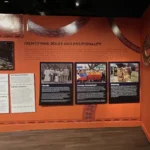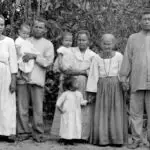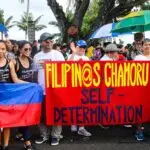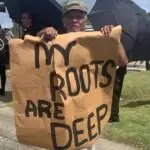Section 3: Identifying Roles and Positionality




Table of Contents
Share This
Throughout the second half of the 20th century Guåhan’s leaders encountered multiple challenges to pursuing self-determination through the mechanisms available within the US domestic legal and political systems. In a plebiscite vote in 1982, 49 percent of voters chose Commonwealth as their preferred choice resulting in the drafting of a Commonwealth Act under the administration of Governor Ricardo J. Bordallo. As Presidents George HW Bush and William Clinton objected to various provisions of the bill, the Act never came to fruition, resulting in Guåhan’s continued status as an unincorporated territory. It was at this point, in conversation with other territories seeking to decolonize, that Guåhan’s leaders turned to the United Nations, with its declarations on decolonization and the rights of Indigenous peoples, as a forum for making its peoples’ voices heard.
I Familia
In Guåhan, one’s positionality is closely related to one’s relationship to others in the community. The strongest personal relationships are those within the family (i familia). Families in Guåhan include individuals from different generations. Because Guåhan is small, people are often already connected to each other through family ties.
Families, too, are connected to each other through close social networks, maintained by notions of reciprocity (the repaying of favors) and cooperation (mana’ayuda). Literally meaning to “make good,” the CHamoru concept of inafa’maolek refers to your relationship to others in the community and the responsibilities you hold to others as a result. Underlying all these relationships is respect (i respetu).
Think about your positionality in terms of your family. What do you see as your role within your family? Your workplace? Your community?
Fanohge Guamanians?
When Dr. Ramon Sablan wrote the “Guam Hymn” in 1919, there was no confusion as to whom he was addressing in the opening line: “Stand ye Guamanians.” Guamanians were the people of Guåhan, and the people of Guåhan are the CHamorus. Today, the term Guamanian refers to people who call Guåhan home, whether they are CHamoru or not.
Guåhan’s population is diverse and increasingly so. Residents include the Indigenous CHamoru people as well as immigrants from neighboring nations in greater Micronesia, Asia, and across the globe. According to the 2010 Census, of the 159,358 individuals residing in Guåhan, CHamorus made up 37.2 percent of the overall population. This was followed by Filipinos who comprised 26.3 percent, whites at 7.1 percent, and Chuukese at 7 percent of the island’s population.
What role do you think these individuals, while not CHamoru, might play in engaging with issues of decolonization and self-determination for Guåhan?
Solidarity
Recently, members of immigrant communities, such as the Filipino and greater Micronesian communities, have voiced their solidarity with the CHamoru people in their pursuit of self-determination. For example, the Fanohge March on 2 September 2019 included CHamoru as well as Filipino, Palauan, Yapese, Chuukese, White, and Chinese participants. The march took place in the weeks leading up to the conference entitled, “Fanhita: Our Continuing Quests for Decolonization,” which brought “together an array of civil rights pioneers, from elected officials to scholars to community activists…from Australia, the US Virgin Islands, Puerto Rico, Hawai’i, American Samoa, the CNMI, Belau and West Papua, to share the experiences of their community in seeking self-determination.”
Fanohge CHamoru Put I Tano-ta: Charting Our Collective Future
-
- Section 1: Introduction
- Section 2: Unpacking Terms
- Section 3: Identifying Roles and Positionality (you are here)
- Section 4: Timeline
- Section 5: Oral Histories and Intergenerational Conversations
- Section 6: CHamoru Renaissance
- Section 7: Envisioning and Enacting a Decolonized Present and Future
- Section 8: Organic Act
- Section 9: Closing and Acknowledgements
- Fanohge CHamoru Exhibition Video Features
